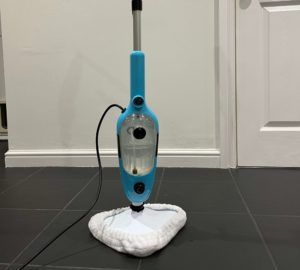Fitbit Sense vs. Versa 3: which should you get?
Fitbit is a household name when it comes to fitness tracking devices. The California based company, now owned by Google, have been releasing fitness trackers since 2007 enabling them to fine-tune their current product offerings. The Fitbit Versa 3 and Fitbit Sense were the latest products to be released by Fitbit back in September 2020. With £100/$100 between the two devices what are the key difference? Fitbit Sense vs. Versa 3, which one should you buy?
If you want to skip to the end to see my final thoughts, click here.

Fitbit Sense – Photo Credit: Fitbit
Fitbit Sense vs. Versa 3: Design & Display
The Sense & Versa 3 are pretty much identical in design. Both feature a 1.58-inch AMOLED display which is a 336 x 336-pixel colour touchscreen. There are quite substantial bezels around the watch face itself but with the right watch face choice, you can minimise the appearance of them. Check this review out of the top 10 best free watch faces for the Fitbit Versa 3 & Sense. Both measure in at 40.48mm x 40.48mm x 12.35mm and opt for a rounded circle shape design, a squircle I guess! The newly introduced haptic button, which appears to divide opinion, features on both devices as well. The haptic button does take some getting used to but it is by no means unusable.
The casing surrounding the watch face is where the only noticeable design difference can found between the two devices. The Fitbit Sense features a stainless steel casing that appears more polished than the aluminium case of the Versa 3 which has more of a plastic look and feel to it. The Sense’s stainless steel case just looks and feels that bit more premium but I guess it is £100/$100 more expensive. You will also notice 2 slight indentations in that stainless steel wrap and that is related to the electrodermal activity sensor but that is covered further down in the comparison.
Colour-wise the Versa 3 comes in a choice of Black, Midnight Blue or Pink Clay. For the Fitbit Sense, you can choose from Carbon/Graphite Stainless Steel or Lunar White/Soft Gold Stainless Steel.
Overall there really isn’t much difference between the two devices. The Sense does have a more premium look and feel to it but when your swinging things about in the gym or getting sweaty in a HIIT session I’m not sure this really matters.
If you want to protect the display on the Fitbit Sense or Versa 3 a screen protector is a good thing to get. There are a number of third-party options available on Amazon. The LK TPU Film Fitbit Versa 3 Screen Protectors are reasonably priced and come with 7 in the box so you can get afford to have that usual 1st attempt disaster. Here is a link to the product on Amazon if you want to get them.

Fitbit Versa 3 – Photo Credit: Fitbit
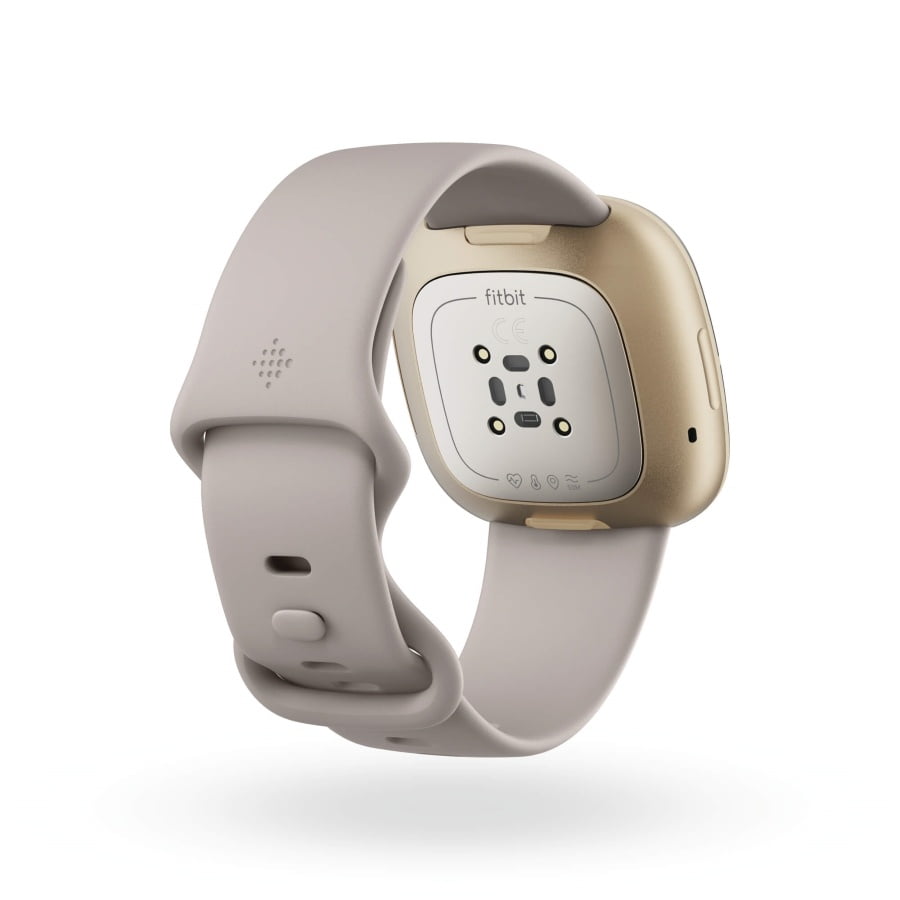
Fitbit Sense – Photo Credit: Fitbit
Fitbit Sense vs. Versa 3: Health & Fitness
| Versa 3 | Sense | |
|---|---|---|
| 24/7 Heart Rate Tracking | Y | Y |
| Heart Rate Zones | Y | Y |
| SpO2 Sensor | Y | Y |
| Built-in GPS | Y | Y |
| Exercise Tracking | Y | Y |
| Water-resistant to 50 metres | Y | Y |
| Accelerometer | Y | Y |
| Sleep Tracking | Y | Y |
| Skin Temperature | Y (Device Temperature Sensor) | Y (Dedicated on Wrist Sensor) |
| ECG (Electrocardiogram) | N | Y |
| Heart Rate Notifications | N | Y |
| EDA (Electrodermal Activity) | N | Y |
| Stress Management | N | Y |
This is the most important category when comparing the 2 devices. As they are fitness trackers first and foremost this is where you’d expect to see the higher-priced Sense differentiate.
When it comes to the core fitness tracking features like steps, exercise tracking, calories burned etc. both of these watches deliver on this really well and that is just typical of Fitbit. Fitbit devices also include one of the best sleep tracking systems on the market with sleep analysis displayed really simply in the app alongside a handy sleep score as well. Both devices have built-in GPS and are water-resistant to 50m so you will have no problems doing your favourite exercise whilst wearing either of them. Also when it comes to tracking different exercise types you get a list of 20+ exercises to choose from on both the Sense and Versa 3.
SpO2 is a new feature on the Sense and Versa 3 which measures how much oxygen your red blood cells are carrying. Although you should know that SpO2 is only monitored whilst you are sleeping and you need a certain watch face to enable it but this is the same across both devices. Our top 10 best free watch faces for the Fitbit Versa 3 & Sense also includes SpO2 watch faces. Check it out here.
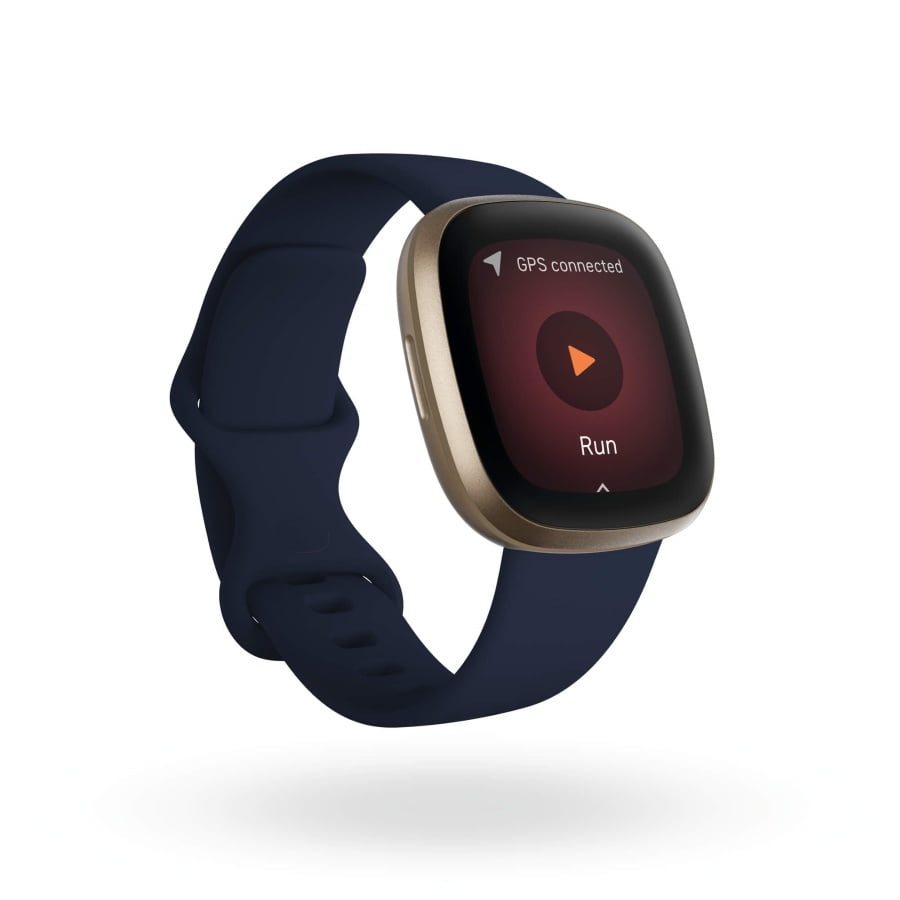
Fitbit Versa 3 – Photo Credit: Fitbit
Difference no. 1 – Skin Temperature
Now both the Sense and Versa 3 both track skin temperature, however, the Versa 3 only has a device based temperature sensor whereas the Sense has a dedicated on wrist sensor. Skin temperature metrics can be a useful indicator of a potential illness and the dedicated sensor on the Fitbit Sense will provide more accurate readings.
Difference no. 2 – ECG (Electrocardiogram)
An electrocardiogram (ECG) is used to measure the rhythm of the heart and can help spot any potential heart problems based on spikes or drops in its rhythm. The Sense is the only device of the two to have this sensor built-in so if you are looking for this level of detail the sense might be right for you. The Fitbit ECG sensor is FDA approved but you shouldn’t rely on this and should always seek professional opinion on any health-related issues.
Difference no. 3 – Heart Rate Notifications
The Fitbit Sense allows you to set custom high and low heart rate zones which it then uses to notify you if your heart rate goes outside of them. The Versa 3 does not allow you to do this. I’m not too sure on the value this feature provides but it may be useful for some.
Difference no. 4 – EDA (Electrodermal Activity)
Electrodermal activity is the electrical conductance of the skin in response to sweating. Fitbit uses these electrical changes to monitor your stress levels in order to determine if they are too high. The Fitbit Sense is the only device of the two that has this feature built-in. To activate it on the Sense you have to place your palm over the watch face for 2 minutes and then it displays how many EDA responses were triggered during the scan. However, I’m not sure how useful or accurate this measurement is.
Difference no. 5 – Stress Management
Only the Fitbit Sense provides you with a stress management score. Similar to the sleep tracking score, it is a number between 1 and 100 used to quantify what your perceived stress levels were on a given day. Again I’m not sure how accurate this is but it can provide positive motivation to actively reduce your stress levels to improve your score.
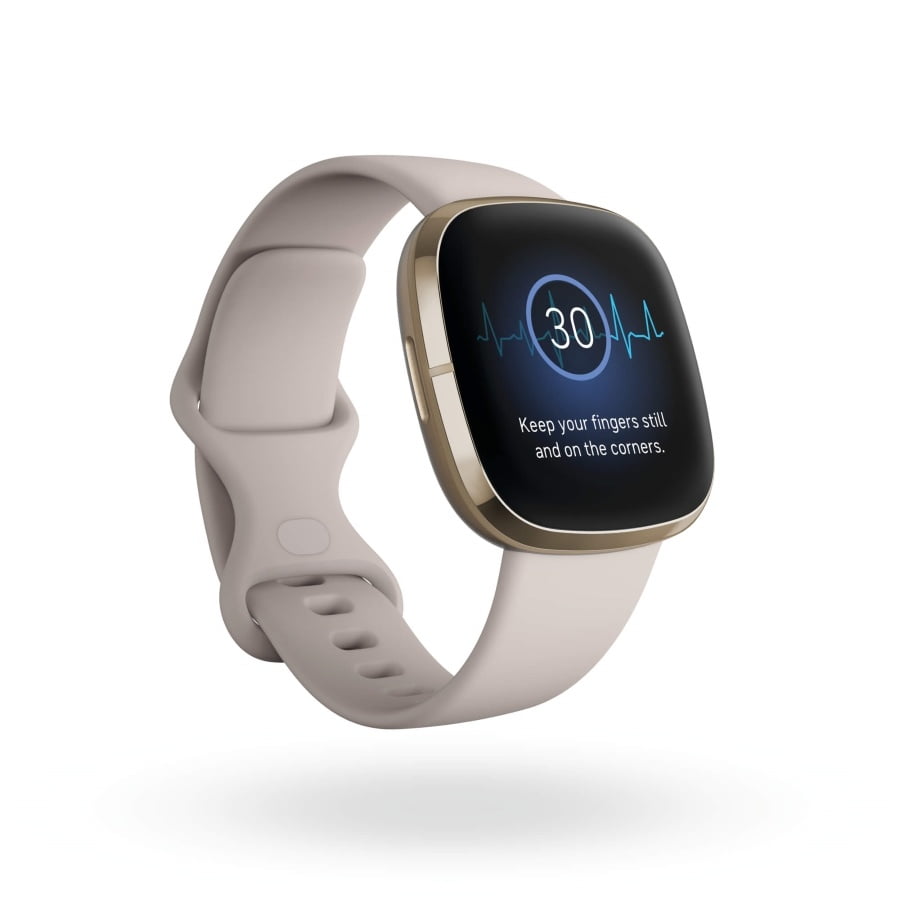
Fitbit Sense – Photo Credit: Fitbit
Fitbit Sense vs. Versa 3: Smartwatch Features
Both the Fitbit Sense & Versa 3 are identical when it comes to their smartwatch features. Alexa & Google Assistant are built into both and triggered by requests picked up by the built-in microphone. You also get the usual smartwatch features like alarms, timers and app notifications. As a side note on notifications, Android users can take calls and respond to messages on both devices however, Apple iPhone users cannot. You can also customise the look of both watches by downloading various watch faces which you can apply from the watch itself or in the Fitbit app. Need some inspiration on which watch faces to choose? Check out this review of the top 10 best free Fitbit Versa 3 & Sense watch faces here.
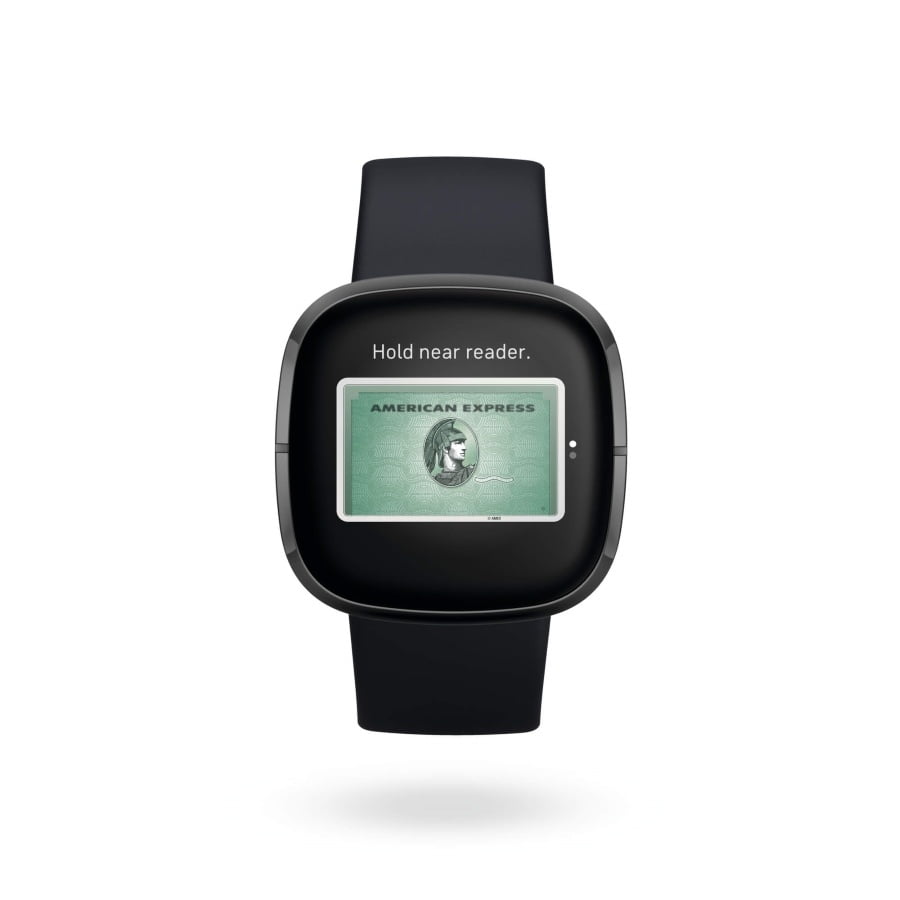
Fitbit Sense – Photo Credit: Fitbit
Fitbit Sense vs. Versa 3: Battery Life & Accessories
Similarly to smartwatch features the two devices are identical when it comes to battery life. Fitbit claims that you should get 6 days out of each device. Now its worth noting that things like activity tracking or enabling the always-on display will reduce the battery life quite a bit. From our testing though the 6-day battery life claim is fairly accurate and you should see this during a typical week which consists of a couple of workouts, your usual steps tracking and the always on display feature turned off. Both devices also feature fast charging with Fitbit claiming that you can get a day’s worth of battery life from just 12 minutes of charging.
The same charging cable can be used for the Sense and Versa 3 which is good to see. However, this means that both suffer from the rather short charging cable that Fitbit ships with them in the box. The Fitbit charger measures around 54cm which unless you are planning to charge from a laptop is pretty much useless. Now there are some 3rd party chargers on the likes of Amazon which can help with this. Here is our review of the KIMILAR Fitbit Versa 3 & Sense Charger Dock which solves the short charging cable issue whilst also not impacting those fast charging speeds.
The Sense and Versa 3 both use a new latch system, which does make it easier to interchange the watch bands. Again this is a nice feature as any bands can be used on both to switch up its look.
Final Thoughts
Having compared both the Fitbit Sense and Fitbit Versa 3 there isn’t a great deal that separates them. Yes, the Sense does have some additional sensors built-in but I’m not convinced that these features warrant the additional £100/$100 asking price. For £199/$229 the Fitbit Versa 3 is a fantastic option and offers more than enough for the casual fitness enthusiast. The Fitbit Sense at £299/$329 should only really be a consideration for the serious health tracking individual but I would still consider the Versa 3 in this scenario. If you want to see a full review of the Fitbit Versa 3 click here.
Thanks for reading this comparison review.
Until next time ![]()


